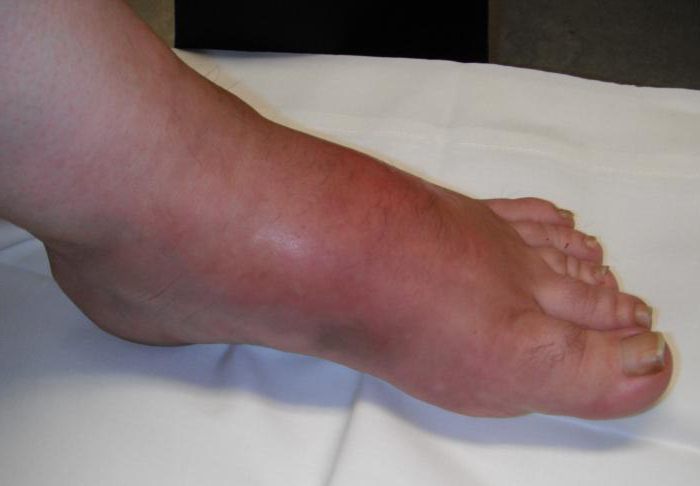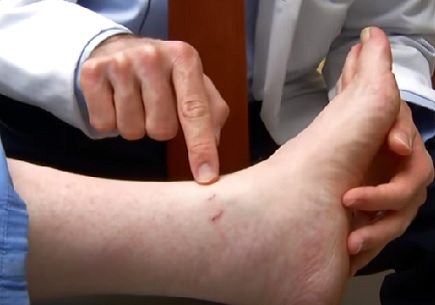Patients have said:
Hans Joachim Leidig
"Now I can finally walk again and enjoy the quality of life I have gained."
Hannelore Massel
Since I started therapy, I can ride my bike again, work in the garden and take an active part in life.
Monika Rothemund-Seibel
"Thanks to HiToP home therapy, I can stand for longer, walk and do the work I love in my fashion shop."
Hans Gerten
"In short: it was worth the purchase and paid off after only 10 months! I can only recommend the purchase!"
Clinical background:
In order to avoid any conflict with the Drug Advertising Act, we would like to make it clear that HiToP® PNP for the treatment of polyneuropathy cannot justify the double-blind studies required for traditional medical approval - due to the high financial cost implications of clinical trials.
Nevertheless, the treatment of polyneuropathy with HiToP® PNP is well known in expert circles because the studies are very impressive:
- 13 studies from 6 different universities or specialist clinics in 5 countries, involving a total of 731 subjects
- Positive evaluation and publication in a scientific journal
- In 2011, including in national care guidelines as a "what it can do therapy"
We also have 10 years of market experience:
- 25 000 people affected by PNP have tried HiToP® PNP
- More than 12 000 people have opted for the device after a trial period of 1-2 months
INTERESTING FACTS, BACKGROUND INFORMATION
Medicines for the treatment of polyneuropathy
Even if polyneuropathy is associated with pain, painkillers are only partially effective in treating it. They do not act directly on the nerves and therefore have little effect.
Anti-epilepsy drugs can be used to stabilise excessive nerve activity. Antidepressants are also suitable for treatment, as the neurotransmitters used to treat depression also act on neuropathic pain. Persistent pain can be relieved with opioids. A single drug is often not enough to treat polyneuropathy. Therefore, doctors usually prescribe a combination of drugs. Before resorting to stronger drugs, the doctor will choose effective treatments with few side effects. The side effects of all the medicines used to treat polyneuropathy should not be underestimated.
Treatment with anti-epilepsy drugs
Gabapentin and pregabalin are mainly used to treat polyneuropathy with antiepileptic drugs. Gabapentin starts at a low dose and is increased over time. To avoid serious side effects, the dose should be increased only slowly. The body needs longer to get used to the drug. If a high dose is needed, the effects of gabapentin last for a long time. Pregabalin has a similar effect to gabapentin. When using anti-epileptic drugs for polyneuropathy, blood levels should be checked regularly as changes may occur.
Treatment with antidepressants
The antidepressants amitriptyline and nortriptyline can be used to treat polyneuropathy. Amitriptyline should be taken in the evening because it has a sedative effect. The dose should be increased gradually to reduce pain adequately. Nortriptyline has a similar effect to amitriptyline. The doctor decides which of the two medicines to prescribe. The active ingredients in these drugs suppress the transmission of pain signals in the spinal cord.
Treatment with analgesics
Painkillers are used for occasional complaints. If the polyneuropathy is more advanced, such painkillers often no longer work. Many patients respond to paracetamol, but diclofenac, ibuprofen or acetylsalicylic acid are hardly effective in polyneuropathy.
Opioids for polyneuropathy
Tilidine or Tramadol are commonly prescribed as opioids for the treatment of polyneuropathy. These are painkillers to which the patient develops tolerance if taken regularly. Because of the risk of addictive psychological habituation, intake requires strict monitoring by a doctor. As the effect wears off over time, the dose should be increased.
Benfotiamine and alpha-lipoic acid
Some patients react to benfotiamine or alpha lipoic acid. These drugs are not covered by health insurance companies. Benfotiamine is a precursor of vitamin B1 and may affect nerve metabolism. Nerve metabolism can also be affected by alpha-lipoic acid.
Diabetic foot syndrome (DFS) (colloquially known as "diabetic foot") often develops as a result of long-term diabetes mellitus. Poorly controlled blood sugar levels damage blood vessels and/or nerve pathways. This leads to reduced pain sensation and/or insufficient blood flow to the limbs, especially the toes. The result is the clinical picture of a diabetic foot, which can manifest itself in deformities, infections and poorly healing chronic wounds. Without prompt and professional treatment, there is a risk of further spread of infection and, in the worst case, amputation.
Causes:
It is estimated that 15% of all diabetics suffer from diabetic foot syndrome. Some people only find out they have diabetes after consulting a doctor because their wounds heal badly. This is the root cause of the various symptoms that may accompany a diagnosis of diabetic foot. Because high blood sugar levels (hyperglycaemia) damage blood vessels and nerves throughout the body for long periods of time, the limbs are particularly affected. Perceptual disturbance due to damage to nerve endings (diabetic polyneuropathy) means that injuries to the foot or hand are noticed late or not at all. They can become inflamed and heal poorly if there is a concomitant circulatory disorder (diabetic angiopathy).
In addition to poorly controlled blood glucose levels, other factors contribute to the development of diabetic foot. These include smoking and physical inactivity, but also untreated high blood pressure and elevated cholesterol levels.
Symptoms
The first symptoms often appear long before the onset of diabetic foot. However, these are often overlooked and ignored by the person concerned. They can also be signs of the development of peripheral artery disease (PAD). The following are important symptoms that should make you sit up and take notice:
Frequently itchy or tingling feet (stabbing sensation)
- Difficult to feel the pulse in the leg (in the middle of the back of the leg)
- Numb feeling, like legs that are numb
- Sore calf when running or at rest
As the disease progresses, the diabetic foot presents with different symptoms. These depend on the stage of the disease and the existing damage. Nerve damage (diabetic neuropathy) and vascular damage (diabetic angiopathy) are possible. They can occur together or independently of each other. In up to 60% of cases, diabetic neuropathy is the underlying cause of diabetic foot syndrome and the reason why patients seek medical attention.
Diabetic neuropathy
In diabetic neuropathy, increased blood glucose levels cause nerve damage (polyneuropathy). One of the consequences is a reduction in pain sensation. Injuries are not noticed at all or too late and can become infected. Improper foot care or shoes that are too tight can also contribute to the development of diabetic foot. Typical symptoms of diabetic neuropathy in the feet:
- Severe numbness in the feet and toes
- Burning or tingling sensation in the feet
- Reddish discoloration and noticeably dry skin
- Severe leg pain during rest, especially at night
- Foot pain that improves with movement (walking).
- Increased callosity and tendency to fungal infections of the feet
- Altered sensation of temperature
Charcot feet
Polyneuropathy can result in a condition called Charcot foot. Despite the existing overload, the continuous stress leads to so-called stress fractures in the foot. These fractures often go unnoticed by the affected person due to a lack of pain sensitivity. As a result, despite the sometimes severe injuries, they continue to put pressure on the foot. The result is severely deformed feet and ulcers that form at the pressure points caused by the fractures.

Diabetic angiopathy
Diabetic angiopathy damages small and large blood vessels in the body. Over time, these lead to circulation problems in the feet and toes, which are associated with a characteristic appearance, such as:
- Cold feet
- Noticeably thickened toenails
- Pale, bluish skin tone on the toes
- Noticeably thin, parchment-like skin
- Reddish-coloured pressure points that do not disappear
- Pain and cramping in the calf when walking
Diagnosis
Various procedures are available to the doctor to confirm the diagnosis of a diabetic foot. The first step is a detailed anamnesis, in which you as the patient are asked about your medical history and acute symptoms. Your feet will then be examined. The doctor will first look at the condition of the skin.
In addition, the doctor may check the sensations of pain, cold and heat in your feet. If there is already a wound, he can identify possible pathogens. It is also important to measure the wound(s) for later follow-up and classification into one of the five stages:
Stage 0 (no wound but possible deformity)
Stage I (ulcers limited to the surface)
Grade II (deep wound extending to the tendon, capsule or bone)
Grade III (deep wound with joint or bone damage)
Grade IV (necrotic (dead) tissue in the front of the foot or heel)
Grade V (necrotic (dead) tissue throughout the foot)
If the doctor suspects a circulatory disorder, various tests are available. Doppler sonography is often used as a diagnostic tool. The doctor can painlessly check the patency of blood vessels in the leg and foot. Deposits and bottlenecks can be visualised on the monitor of the device.
If your foot is deformed or your doctor suspects a fracture, he or she can order an X-ray. Magnetic resonance imaging (MRI) is also used in some cases. It allows a more detailed view of the bony structure of the leg.
If you were previously unaware of diabetes, you may also need a detailed diagnosis. In addition to blood tests, long-term blood glucose monitoring may be warranted.
Treatment
Treatment of the diabetic foot starts with the underlying cause, elevated blood glucose levels. It is controlled by adjusting the level to normal by administering insulin. Dietary changes and more exercise also play an important role in keeping sugar levels under control in the long term.
The second step is to treat other existing complaints. In particular, ulcers and open wounds need to be treated quickly and professionally to prevent pathogens from getting in and to allow healing. This can be lengthy and may involve surgical intervention in individual cases. In most cases the wound is treated by a diabetologist/surgeon. His/her role is to regularly clean the wound bed of necrotic and fibrinous deposits to create the wound environment necessary for healing. This is followed by wet wound care, where the dressing is changed once or twice a day depending on the wound.

If circulatory problems are causing your open wounds, these should be eliminated before further treatment. This is done by bypassing the blocked blood vessels through a so-called bypass. This usually requires minimal surgical intervention.
If an infection has already occurred, your doctor will prescribe an appropriate antibiotic after the swab is removed. Clindamycin is often used. The aim of the medication is to control the pathogens, which is important to prevent the spread of infection in the body. Otherwise, there is an increased risk of bacteria entering the bloodstream and causing life-threatening sepsis.
If you have broken bones or ulcers on your legs, your doctor will provide appropriate treatment. For complex fractures, surgical treatment may be necessary. If necessary, you may be able to relieve pressure on the foot by prescribing orthotic insoles or special footwear.
In many cases, accompanying pain management is necessary because patients with polyneuropathy in particular sometimes suffer from very severe pain that seriously affects their lives.

What sports activities can help you manage your neuropathic symptoms?
It all depends on the right sports!
Unfortunately, if you have been diagnosed with polyneuropathy, it doesn't matter whether you play sports competitively or occasionally. However, the choice of the right sport depends on the type of polyneuropathy: if your symptoms include numbness and similar sensory disturbances, you should make sure that the sport does not pose an increased risk of injury or accident. Walking or running barefoot for long periods is as inappropriate as using a treadmill. If the right sport is chosen, regular exercise will support the therapy prescribed by the doctor. The more regularly you exercise, the better the therapeutic support! This works even if you are not very fit and therefore do moderate exercise.

These sports are recommended for polyneuropathy:
If the polyneuropathy causes disturbed sensations in the feet, sports that are easy on the feet should be chosen. Cycling or swimming are good and, if done regularly, will improve personal fitness. Strength training is also a suitable sport for people with polyneuropathy. If you go to a gym, you should bring your polyneuropathy to the attention of the trainer so that he or she can show you low-impact exercises and suggest specific exercises. Walking or "walking-walking" is also suitable for polyneuropathy.
In principle, any sport that trains endurance and strength and increases mobility is suitable. Regular exercise is necessary to support the therapy recommended by the doctor. Incidentally, several short bouts of exercise at shorter intervals are better than intense exercise at weekends. This will allow the metabolism and the body to slowly get used to the regular workload. Being part of a club or sports group can significantly increase your endurance.

Special gymnastics for the legs
If walking or strolling is too strenuous for you at first, or if you have difficulty walking because of polyneuropathy, you should continue to be mobile. This improves circulation to the toes and soles and prevents further injury. Leg exercises are easy to do sitting down and can be done while eating or watching TV. For example, while standing, roll your feet from toes to heels. This not only strengthens the muscles of the foot, but also the calf and improves circulation there. Lift one leg up and extend the leg horizontally away from you. Wiggle your toes (like a ballerina), roll a massage ball under your feet, or draw circles and figures with your feet in the air.
Every movement helps!
Even if you don't have much time to move, you can move a little more every day. Instead, take the stairs and skip the elevator. The more you move in your daily life, the better for your health. In polyneuropathy, wear seamless tights and well-fitting shoes to minimise the risk of injury. Check your feet every day when washing and grooming so you can quickly spot any blisters or other injuries and treat them. Lastly, polyneuropathy is associated with an increased risk of injury and infection due to the often disturbed sensation of pain.